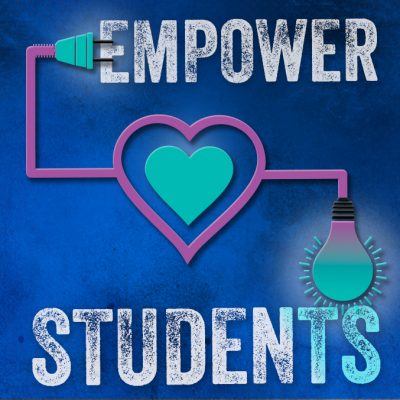
Historically Responsive Literacy Framework: Cultivating Holistic Learners & Citizens
We want to cultivate young people who, across the course of their lifetimes, will disrupt, disquiet, or unhinge oppression. This means we must teach beyond sanctioned curriculum and standards.
– Dr. Gholdy Muhammad

INTRO
In this interview, Gholdy Muhammad explains elements of her Historically Responsive Literacy Framework. It explores the questions of: How does our curriculum and instruction help students to learn about themselves or others? How does our curriculum and instruction help us understand power, equity, and anti-oppression?
Dr. Gholdy Muhammad emphasizes that despite its name, “The historically responsive equity framework is not just for literacy instruction or literacy educators per se but for all teachers across the disciplines.”
OBJECTIVES
- Understand Gholdy Muhammad’s Historically Responsive Literacy Framework
- Reflect on how your school does and/or does not already incorporate this Framework
- Reflect on how you can incorporate this Framework into your school/classrooms going forward
The below are key takeaways and excerpts from the complete article.
4-Part “Equity Framework” for Literacy Instruction
- Identity Development
- Skill Development
- Intellectual Development
- Criticality
Identity Development
Identity is made up of who we say we are, who others say we are, and the people we desire to be.
SELF-IDENTITY: Students are constantly making sense of who they are, and classroom instruction needs to be responsive to their identities. When youths have a strong sense of their own histories and identities, it becomes a refuge or a protection. When they don’t know themselves, others may tell them, and sometimes that may not be positive.
DIFFERENT IDENTITIES: Not only is it important to teach youths who they are, but educators should also teach students about the identities and cultures of others different from them. When we have true, clear, and complete understandings about people different from us, we are less inclined to hate, show bias, or hold false views of others.
IN PRACTICE: With each lesson or unit plan, teachers should ask, How does our curriculum and instruction help students to learn about themselves or others?
Criticality
Criticality is the capacity and ability to read, write, think, and speak in ways to understand power and equity in order to understand and promote anti-oppression. I define oppression simply as any wrongdoing, hurt, or harm.
DEFINITION & MEANING: Critical with a capital “c” is related to power, equity, and anti-oppression. It is helping youths to be “woke” socio-politically. Criticality calls for teachers to connect their teaching to the human condition and to frame their teaching practices in response to the social and uneven times in which we live. This means helping students understand content from marginalized perspectives.
OUTCOMES: This will support students toward being critical consumers and producers of information. It will also help to build a better humanity for all.
IN PRACTICE: With each lesson or unit plan, teachers should ask, How does our curriculum and instruction help us understand power, equity, and anti-oppression?
“Deficit” Thinking and Perspectives
Deficit thinking can be viewed in different ways. First, it is any thinking, perspectives, or ideologies that are negative, false, incomplete, or destructive. It can also be defined as capturing someone’s story as a single narrative or starting one’s story in false, damaging, or incomplete ways. Deficit thinking is a type of oppression and leads to racism or other forms of harm.
CONSEQUENCES: It creates trauma and harms our young people. What happens when teachers think less about other people who share the same race or identity of their students? Do teachers think this type of thinking never manifests or makes its way into classrooms? We don’t leave our racism, biases, political agendas, or ideologies at home when we enter classroom spaces. When deficit thinking leads to trauma, our students may be affected for the rest of their lives. Our young people may feel like they don’t belong; they may feel worthless or that they are not good enough. Their academics and engagement are negatively affected as a result. This can follow them throughout their lives and disrupt their joy.
WHAT EDUCATORS NEED TO DO: We start our children’s stories with genius, especially Black children’s, because the nation has struggled to get it right with us the most. We must disrupt deficit ways of thinking and being.
Lesson Ideas
When Dr. Muhammad develops lessons or unit plans, she tries to connect the learning around the human condition or a social issue.
In the below examples, she structured a unit around the water crisis in Flint, Michigan. This issue became the impetus for science and math lessons, but these lessons can be adapted to other content areas because the issue can be observed from many angles.
- Identity Development
- Students will understand their personal dependency on water.
- Skill Development
- (Math) Students will learn to examine percentages of lead content found in water. They will also learn how to create equations with two or more variables to represent relations between quantities as well as graph equations on coordinate axes with labels and scales.
- (Science) Students will define environmental justice and name the importance of water quality for humans.
- Intellectual Development
- Students will learn about the water crisis in Flint, Mich.
- Criticality
- Students will learn to consider how the government prioritizes community needs based on socioeconomic status and/or race and understand the media’s role in the government’s response to a crisis.
Questions to Reflect on When Planning Your Lessons
Keep these questions in mind as you plan your own lessons:
- What issue is most urgent for students’ learning?
- How does this issue connect to the world?
- How can I connect content-learning skills to this issue?
- What multimodal text can layer in my lesson or unit plan to teach this topic/issue?
- Think about print and non-print texts.
- What creative and engaging exercises will I engage students in to teach this topic/issue?
- How can I assess each of the four learning standards?











Responses